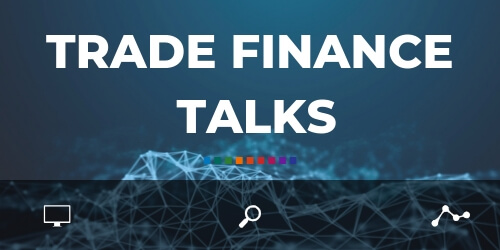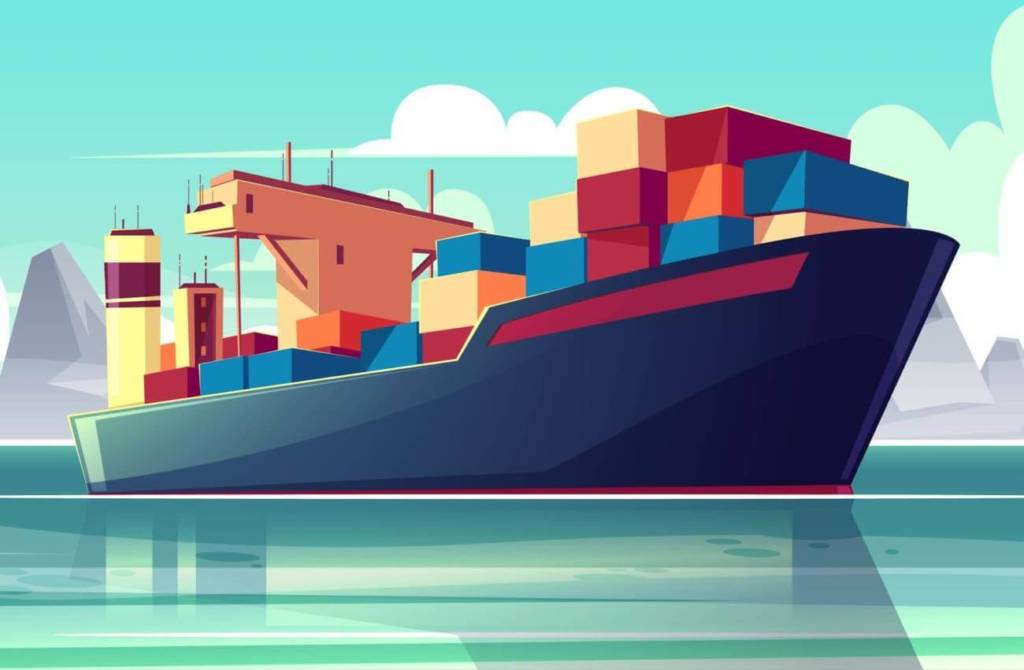Listen to this podcast on Spotify, Apple Podcasts, Podbean, Podtail, ListenNotes, TuneIn, PodChaser
Season 1, Episode 18
Host: Deepesh Patel, Editor, Trade Finance Global
Featuring: Marian Boyle, Partner, heads the firm’s UK insurance and disputes practices, Sullivan, London
Hannah Fearn, Managing Associate, Sullivan, London

Credit Insurance is an important risk mitigant in international trade. So much can go awry, from political issues to non-payment. Both corporates and banks are now using credit insurance as a risk mitigant when financing international trade. But what actually is credit insurance, how can it be used to facilitate trade finance as a risk mitigant, and what are the key watch outs a corporate or bank should consider when using credit insurance? We talked to two credit insurance experts about security, policy wording, obligations and what happens when things go wrong.
What is an insurance underwriter versus an insurance broker, and what types of insurance can be used for financing cross-border trade?
Deepesh: I’m Deepesh Patel, Editor at Trade Finance Global.
Deepesh Patel: Last week, we were talking about exporters, with Imran Arshad from Eventuri, who exports 80% of his UK manufactured car products to luxury car manufacturers around the world. Most of this is done on open accounts, meaning payment is often accepted after the buyer has received the goods.
Today we’re talking about the ‘What Ifs?’. What if the buyer becomes insolvent during the period between ordering the goods and the goods being dispatched? What if there’s a disagreement over the contracts? What if the goods get damaged during shipment or while on the cargo ship? What if there’s a disagreement about who pays for customs taxes and tariffs?

It’s often usual to cover against non-payment or other unforeseen events, but what actually is credit insurance? We hear a lot about credit insurance in the trade finance space, often alongside terms such as Basel III and IV regulation, credit risk mitigation, indemnity and obligor ratings. But what does it all mean? We decided to speak to some experts about credit insurance – how it impacts trade and how it benefits corporates and banks.
Today, I’m joined by two familiar faces from Sullivan, Marian Boyle, who looks after the UK Insurance and Disputes Practice and Managing Associate, Hannah Fearn. Ladies, thank you for joining me on trade finance talk today! So, in no more than 30 seconds, Marian, tell us your elevator pitch. Who are you and what do you do at Sullivan, specifically in relation to the use of insurance and other forms of risk mitigation techniques within trade finance?
Marian Boyle: Hi Deepesh. I work closely with our award-winning trade and export finance team and with the US-based disputes team. I offer advice on insurance, on risk management and on commercial dispute resolution.
DP: Thanks Marian. Hannah, what about you?
Hannah Fearn: I’m a Managing Associate in the London team at Sullivan. I work within the trade finance team, advising on a broad range of trade finance structures and instruments. I have a particular interest in focusing on different types of risk distribution techniques to achieve capital relief for various types of instruments. I was also closely involved in updating the template BAFT Master Participation Agreement over the last 18 months.
DP: Thank you very much. Marian how significant a role does credit insurance cover play within trade finance?
The Importance of Credit Insurance in Trade Finance
MB: Okay, so credit insurance is very significant, but I think it’s probably worth broadening out a little bit to cover the other types of insurance that are significant in trade. For asset-based finance, it is usual for the lender to require the risk of loss or damage to the assets to be insured. It’s important because the goods they are insuring against are often in transit – that those transit risks are also covered off, which is something that is likely to be required.
Then there is warehouse financing – where the lending is often on a revolving basis against the volume of goods in the warehouse awaiting shipment until you have the right quantity of goods for that one contract. Again, it’s very important that not only the physical risk is covered off, but also that there is professional indemnity cover to guarantee the security of the package while under the care of the collateral manager. In certain jurisdictions, it would be normal to also expect there to be some sort of crime or fidelity policy to cover off the risk that employees or those involved in the transportation of the goods might be tempted to take some valuable goods and replace them with something less valuable.

Coming on to your main question regarding credit insurance – it is extremely significant, in terms of financing tools. The risk mitigation that the banks will want, includes making sure that the non-payment risk is covered off. Traditionally, that used to take the form of credit insurance, which would usually be taken by the bank’s customer on a revolving basis. So it would be for the whole book of business that the bank’s customer had and it would cover certain limits for certain counterparties or obligors and certain country limits.
But in our experience, that type of cover has moved on. The banks now take out their own credit insurance. For some, the risks covered would only be a political risk, but for many, it’s a comprehensive non-payment. The significant difference between those two types of cover is that the political risk cover would only cover you for country risk: expropriation of the assets, or some political acts that destroyed the supply chain in some way.
Non-payment covers the risk of non-payment for any reason and, again, that’s significant because, under the old political risk form of policy, the borrower (or the insured party) would have to prove what caused the loss and ensure it fell within specific, defined political risks. Under comprehensive non-payment, all the insured party has to show is that they haven’t been paid. They don’t have to say why they haven’t been paid – they only have to prove the fact of non-payment, which makes it very valuable.
DP: Interesting. Thank you, Marian. I guess we’ve got to start thinking about more creative solutions and all of the different types of risks – how insurance can play a role in those individual parts. So, let’s talk more about the actual structures of the insurance arrangements.
Brokers versus Underwriters in Credit Insurance
HF: So there are various ways you can structure your insurance cover in different types of scenarios. The rights of the bank can vary considerably depending on how you structure it. So it’s going to be a case of looking at a particular structure and what it is that the bank is trying to achieve. One option is, of course, for the banks to get their own policy. So, for example, to cover the non-payment risk of the person they’re lending to. In that scenario, the bank is paying for its own policy and will have sole responsibility to discharge the obligations under that policy. It can also control the making of the claim and the inherent benefits of that. That option means that the bank can negotiate its own wording and may be able to leverage relationships with brokers and underwriters to get the best possible cover.
Co-Insurance: What is it?
Another option is co-insurance. This might be where the borrower and the bank are both insured under a policy in respect of, for example, non-payment by a third party, such as receivables debtor. From a legal perspective, this is intended to be two separate policies on the same terms. So both the bank and the borrower are co assured for their own risk of loss. In that scenario, the bank is still going to be liable to perform obligations under the policy. But the borrower’s act – or failure to act – won’t prejudice the bank’s rights, which is why in some circumstances, the bank will be looking for that co-insurance, because they want to ensure that if the borrower fails then it will still get paid. The reality though, is that it’s quite difficult to achieve and involves very careful drafting to ensure that the policies do operate separately and the bank has an independent cover.
Loss Payee Status
Another structure we see in trade finance is loss payee status. This is where the borrower might have a policy covering the loss of cargo that the bank is financing and the bank wants to be noted as the loss payee on that policy. Loss payee status gives the bank the right to receive payment from the proceeds of any claim under the policy, but they don’t have any liability under the policy to pay in premiums or comply with any policy terms. However, that means that they are relying on the borrower to perform – the borrower must pay its premiums and fulfil its obligations under the policy; the borrower must make a claim for the bank to get paid. Of course, in that scenario, the bank can have very limited scope to negotiate the terms on which that policy is made, especially because the borrower probably already has a policy in place.
We also see assignments of the proceeds along with the loss payee status. This is to give the bank some extra protection. It’s essentially a security, wherein an insolvency situation, the bank will hopefully get some priority over the proceeds if and when they’re paid.

Credit Insurance Trends within Trade
DP: Thank you. Marian, how has the role of insurance generally within trade finance changed over the last decade or so?
MB: In our experience, as I believe I alluded to earlier, banks are now using non-payment insurance policies much more frequently. Policies have definitely moved on in the last 10 years – now I very rarely see stand alone political risks policies. The other change worth commenting on I think is that the wordings for non-payment insurance policies have definitely become more user-friendly. I think this is driven in part by the fact that, in light of the Basel Accords, banks have been able to use insurance as a credit risk mitigation, which I know is a question we’re going to touch on a little later.
Most banks take the view that in order to be confident that their policy will be eligible for capital, they want a lawyer to check the eligibility criteria and make sure it ticks the boxes. So that means these policies have become much more user -friendly than they were previously. The result, because lawyers are striving to meet the strict capital relief criteria – one of which is that the risk transfer must be effective – is that the policies have become much more clearly drafted. There’s definitely been a removal of ambiguity and the old form of policy drafting where there were a lot of words going over the same issues but in slightly different ways…that has gradually petered out. So, in my experience of all the insurance products I have come across in my insurance practice at Sullivan’s, I would say that non-payment insurance policies are head and shoulders above the other products that are used in the trade market, in terms of the sophistication and clarity of the wording – and in terms of the user-friendliness.
So, how to use insurance more effectively?
I think it comes down to a very simple message – the purchasers of insurance have got to understand what they’re buying. Reading the policy is the single biggest, most important step I think you should take. All too often I think people buy insurance products, but the policy in the drawer, and then only take it out if there’s a claim. The difficulty is twofold. First, it’s undoubtedly the case that non-payment insurance will contain obligations on the insured. So, as part of the bargain, in return for insurers agreeing to take the risk, they will expect certain things to be done or not to be done. Therefore, if you haven’t read the policy – the important stakeholders within your organisation aren’t aware that certain things are prohibited by it – or that certain things must be done in a certain way.
I think the second most important thing is to understand that while these are, of course, English law contracts, it’s definitely the case that insurance operates within a very specialist and quite different legal landscape. It’s subject to its own particular rules, and not being aware of how those rules are going to be deployed against a claim situation can cause you to have a much more troublesome claims experience than would be ideal. So, in summary, read the policy and understand that these are specialist creatures. We can use them much more effectively if we’re aware of those two considerations.

Standardisation in credit insurance space
DP: Thank you Marian! I think one thing that we found very interesting in this space is that standardisation is a theme that crops up quite a lot or rather that the lack of standardisation is a problem. How does that affect clients and customers? Secondly, leading on from that, what advice would you give for clients looking to find out more detail about the processes involved in order to be fully compliant with the policies they are given?
MB: Okay, so the first question is regarding the lack of standardisation and if that is a problem. I don’t believe so. I know there has been a move towards having more standardisation, but there are barriers; I think many banks have developed their own product with their own wording which they’ve very comfortable with. It suits them and the particular deals they want to finance. It’s very hard for them to give up those products and wordings unless they can be sure that standardisation is going to be at least as good as what they are giving up.
The other barrier to standardisation is that the banks have a good relationship with insurers; insurers are more comfortable with financial institutions they have a track record with. They know their processes. They know that the bank is going to treat an insured risk in exactly the same way as they would be treated an uninsured risk so that there’s no double standard being applied.
A new entrant to the market, who doesn’t have a track record with insurers, is obviously not going to develop one with their first foray into purchasing non-payment insurance. They’re obviously not going to get the same terms as a sophisticated user who has been around the block with insurers and proved they know how to handle claims properly. So, having a standardised product is likely to mean that we reduce the coverage to the lowest common denominator that would be offered to any new financier entering the market, which is not, in my view, going to meet the needs and requirements of the more sophisticated users.
I think for your second question, we’re probably going to touch on this in more detail when we come to discuss claims. But knowing what you’re obliged to do under the policy means that you are undoubtedly going to end up with a better result in your claim. If you don’t understand what your obligations are when you read the terms, I think you should get specialists advice. Your first port of call should be an insurance broker (I will touch on the role of brokers when we come to discuss claims in more detail). Brokers are an invaluable source of knowledge regarding these markets. I would also suggest getting specialist legal advice. If a bank, for example, has a complicated tax issue, they go and get specialist tax advice. It’s the same with insurance. They operate in a specialist legal landscape and people giving advice should be aware of that specialist legal landscape. Otherwise, it’s quite possible to misinterpret things that are very significant.
DP: That’s really good advice, Marian. Hannah, what do you think are the core benefits that insurance and other forms of risk mitigation techniques can offer trade receivables finance, and how is Sullivan working with clients to maximise some of those benefits?
HF: Okay, well, I mean, one of the key benefits of getting, for example, non-payment insurance is that you have that third party credit support. So different types of risk mitigation, like credit insurance, have a very similar economic effect. Essentially, you have a third party – who is independent of your underlying borrower – who agrees to make a payment in the case that the underlying borrower defaults. That gives you a risk transfer to that third party and can help banks provide finance, such as if they have internal obligor limits or internal country limits. Entering into these types of risk transfer agreements can help them provide more finance to their clients, while still being covered internally.

Capital Relief and Basel Standards
Another big point is the capital relief point that has been mentioned. So, we have the Basel Standards and you have the Capital Requirements Regulation (CRR), which implements those standards and sets out the very detailed requirements that these types of instruments have to satisfy. But if you can meet those requirements, it can really increase the appetite banks have to finance trade finance transactions, because it essentially makes that financing more cost-effective for them. In terms of our role, as lawyers, we’re working with the clients to achieve the best possible wording. That can include looking at the obligations under the policy and making sure they have the best cover but also making sure those CRR requirements are met. That, in turn, can involve issuing legal opinions to satisfy the regulatory requirements and demonstrate that they are being met.
With trade finance in particular, there are so many different structures and different ways of financing, that it’s really important to make sure that policies are fit for purpose, which can involve tailoring the wording to make sure it really suits the transaction. Advising on policy obligations obviously involves minimising the risk of a dispute down the line, if there is a claim. Helping a client agree the wording with a broker can really streamline the process of putting the cover in place on an ongoing basis.
How to make a credit insurance claim
DP: Thanks, Hannah. So, Marian, back to you. What is the usual procedure that is followed when insurance claims are made?
MB: Assuming that we’re talking about a claim under a non-payment insurance policy, it would be very usual for those policies to contain notification provisions. These are insurer requirements saying that, in the circumstances where a loss might be likely, they want to be notified before a claim arises. So in keeping with my earlier theme of knowing your obligations, the first thing is to make sure you understand what your notification obligations are. They might kick in before a claim arises, they might kick in at a much earlier stage than you anticipate. It is clearly important you comply with these requirements because that was the deal that was struck with the insurers.
If it’s a non-payment policy, it is likely that there will be a proof of loss form specified in the policy, including things such as what steps have been taken to try and recover the losses etc. It’s likely, given the notification procedure that I mentioned earlier, that insurers will be well aware that a loss might be in the pipeline because of the earlier notification.
For claims of significant value, they are likely to be referred by insurers to a loss adjuster – that is someone who works for the insurer, not the insured – who will investigate the claim. They’ll be looking to see whether any of the risks that are excluded have some bearing on the loss because they’ll need to report that to the insurance company. They’ll likely be asking quite a few questions in their information-gathering process. Ultimately, their job is to confirm to the insurers that the claim is a valid one, it falls within the scope of the policy, and is for the correct amount. That generally takes place during what is known as a ‘waiting period’. Non-payment policies usually contain a period of time during which the parties exchange information about the claim. Then, at the end of that process, the insurer will reach a determination of the claims which, hopefully, is a positive response. But occasionally, if a claim falls within certain exclusions or if insurers believe there might be some problem, there will be a debate regarding the legitimacy of the claim.
DP: Leading on from that, when insurance claims are made what are your top five tips for our listeners, should they become involved in an insurance claim?

5 tips for making an insurance claim
MB:
(1) Read your policy
You won’t be surprised to hear my first one is to read the policy! You have to read them to gain a clear understanding of what your obligations are in the claim scenario. As I’ve mentioned, there will likely be notification provisions in the policy, so try and ensure you have complied with those. It is important that the conditions precedent and insurance warranties have been fulfilled before you are able to make a claim.
It is also important to make sure that all relevant stakeholders are aware that a claim is being made on the policy and that the terms of that policy will prohibit certain conduct, or that insurers should be contacted before certain steps can be taken. For example, in a claim scenario, it wouldn’t be unusual for the financier to reach out to the obligor l and try and explore ways to make sure the debt is paid, by reaching some sort of accommodation to the obligor. It’s really important you know what your policy requires of you because it is likely that these policies will contain an obligation to cooperate with the insurer and consult with them regarding any claim circumstance. These vary from policy to policy, so there is absolutely no substitute for reading your wording and understanding what your obligations are! If after reading the wording you are still unclear what your obligations are, consult your broker. If you do not get satisfactory answers, get specialist legal advice.
(2) Work with your broker
My second top tip is to work with your broker. As I mentioned earlier, sophisticated brokers in this market are an absolute font of knowledge. They understand their markets, they understand the quirks that particular underwriters might have – we’re all human and it’s a people business. Underwriters might want things done in a certain way, or might be very particular about some aspect of the risk that you don’t think is important, but which his experience has caused him to be concerned about. So just go with that.
(3) Understand the investigation of rights
Third, don’t be alarmed if insurers state that they are investigating the claim under a reservation of rights, this is perfectly standard, it doesn’t indicate anything negative. What insurers are trying to do is to make sure that they’re able to investigate the claim without waiving their rights which is, of course, reasonable. It is fairly standard.
(4) Cooperate
Fourth, be cooperative. The policy will probably require your cooperation anyway, but even if it doesn’t, insurers are there to pay valid claims, so requiring information is understandable. Ensure that when you give them information all your responses are 100% accurate. I cannot emphasise enough how scrupulous you should be when giving answers to questions. It is very easy – with the passage of time – to misremember events or the sequence of them. Don’t give them unclear answers, explain that you will check and get back to them. That is especially important when you are working with loss adjusters, who are acting on behalf of the insurers. So while you’re being scrupulously honest, obviously be alert too.
(5) Be aware of each parties right
Finally, remember that if your claim is paid, that’s not the end of the obligation that you’re under – the policy will likely require your assistance with the insurer’s rights of subrogation. Subrogation is simply the act of insurers stepping into your shoes and using your name to pursue any remedies that you might have to diminish the loss
If insurers unreasonably refuse or delay claims payment, get some specialist advice – it’s important, as I mentioned earlier, that you do go to someone who has insurance expertise because you can bet that insurers will be instructing specialist claims lawyers- you need to have some “parity of arms”!
DP: Well, thank you very much. That was very interesting and some very useful advice there. In particular, the mentioning of all the different insurance policies, not just non-payment, as well as the political and crime-related policies. The key point is clearly the importance of reading your policy and knowing your obligations – I don’t think we can stress that enough. There was also some clarity on the reporting requirements and the important role the broker can play. So, thank you both very much for joining us today. We look forward to hearing from you again soon.
HF and MB: Thank you very much.




























